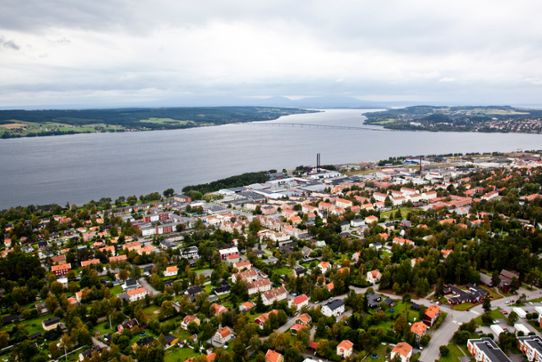An extensive project has been undertaken in Östersund Municipality since the winter of 2010/2011 when tens of thousands of people became ill as a result of an outbreak of a parasite in the drinking water. Thanks to preventive solutions such as a new drinking water purification process that takes the form of a membrane filter, it is hoped that a similar situation can be prevented from occurring in future.

The water used to supply Östersund with drinking water currently comes from Sweden’s fifth largest lake, Storsjön, which is part of the river Indalsälven’s drainage basin. The raw water that supplies Minnesgärdet, Östersund’s largest waterworks, is taken several hundred metres from the shoreline. The water is clear, oxygen-rich and low in nutrients, but as the climate changes, it is expected that the quality of the raw water will do so as well. Increased precipitation and a warmer climate are expected to lead to the water containing more particles such as humus substances and microbiological substances.
Drinking water supply in Östersund Municipality
Having found the Cryptosporidium parasite in the drinking water in the winter of 2010/2011, Östersund Municipality drew up a water and sewerage plan. This plan prioritises measures that apply to the drinking water supply in three categories: necessary, urgent and desirable. One of the necessary measures described in the plan is to replace an inactivating barrier (ozonisation) with a separating barrier in the largest waterworks at Minnesgärdet in Östersund. This is described as the single most important measure in terms of the drinking water supply.
A separating barrier is a barrier in the drinking water production process that separates out microorganisms using a physical barrier. An inactivating barrier is a process that renders microorganisms harmless. The National Food Agency recommends that both types are used in the production process.
A trial facility containing two different membrane filters was planned for completion in spring 2014 at Minnesgärdet Waterworks. The trial facility would be a separate part of the works and the purified water would run directly out into the lake again. The trial was used to determine which type of membrane filter would be installed in the purification process, an ultrafilter or a nanofilter. The pores in an ultrafilter are 10–100 nm in size and those in a nanofilter are 1–10 nm. This means that an ultrafilter filters out bacteria, viruses, humus particles and parasites. A nanofilter also filters out certain ions. Using a nanofilter requires more energy than using an ultrafilter as a higher pressure is necessary to force the water through the smaller pores.
Financing
As the plan was to complete the project in spring 2014, there was a preliminary budget in the plan for the water and sewerage supply plan for the membrane filter project. The budget of SEK 120 million also includes the trial facility with the two different membrane filters. The project was financed by Östersund Municipality.
More examples of climate adaptation
This is one of many examples of climate adaptation. There are more in the collection of ideas being built up by the Swedish National Knowledge Centre for Climate Change Adaptation at the Swedish Meteorological and Hydrological Institute (SMHI). The collection of examples has the aim of sharing experiences and providing ideas to everyone who works with climate adaptation. Examples describe concrete measures and challenges in several subject areas. They show how different actors have worked to adapt their activities to the climate changes that are already being noticed today and those that we cannot prevent in the future.